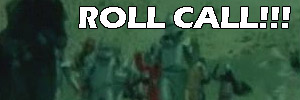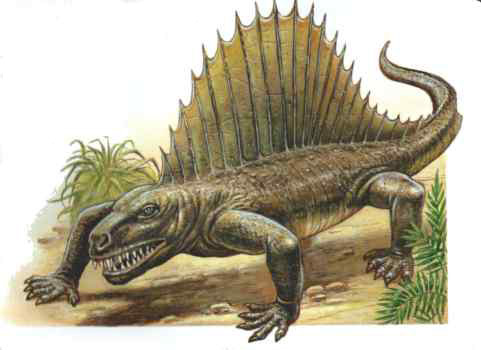Avery G, who sends us movie news scoops, has just completed his Top 20 Craziest Kaiju Countdown hosted on the Undead Backbrain blog. Check out his choices and let him know what you think!
Godzilla Island – Story Arc 13
Godzilla Island – Story Arc 13

1997![]()

Directed by Shun Mizutani

This ultra-short story arc will be the shortest of the series. It will also be a clip show, despite the fact they’ve already had a clip show. If only they showed a clip show of the clip show, then we’d be getting somewhere (Hell!) We also get a slight remix of opening song, to emphasize the change in tone. Or something.


|
Different monster feature in each episode, so we’ll keep track of them in each story arc. The complete Godzilla Island Daikaiju List is located here. We’ll also list any new monster match-ups that weren’t in any film but now exist thanks to this series, such as Jet Jaguar fighting Proto-Moguera or something. The R2 Japanese DVD release is unsubtitled, so most of what is going on will be educated guesses thanks to our limited Japanese speaking ability. But here at TarsTarkas.NET we don’t need no stinking subtitles!

Tasmanian Tiger gene inserted into mouse, will NOT allow dinosaur cloning

Extinct Tasmanian tiger gene brought back to life: scientists
by Lawrence Bartlett Tue May 20, 3:14 AM ET
SYDNEY (AFP) – Scientists said Tuesday they had “resurrected” a gene from the extinct Tasmanian tiger by implanting it in a mouse, raising the future possibility of bringing animals such as dinosaurs back to life.
In what they describe as a world first, researchers from Australian and US universities extracted a gene from a preserved specimen of the doglike marsupial — formally known as a thylacine — and revived it in a mouse embryo.
“This is the first time that DNA from an extinct species has been used to induce a functional response in another living organism,” said research leader Andrew Pask of the University of Melbourne.
The announcement was hailed here as raising the possibility of recreating extinct animals.
Mike Archer, dean of science at the University of New South Wales who led an attempt to clone the thylacine when he was director of the Australian Museum, called it “one very significant step in that direction.”
“I’m personally convinced this is going to happen,” he told the Australian Broadcasting Corporation. “I’ve got another group working on another extinct Australian animal and we think this is highly probable.”
Pask told AFP in a telephone interview that while recreating extinct animals might be possible one day, it could not be done with the technique his team used on the Tasmanian tiger.
“We can look at the function of one gene within that animal. Most animals have about 30,000 genes,” he said.
“We hope that with advances in techniques that maybe one day that might be possible, but certainly as science stands at the moment, we are not able to do that, unfortunately.
“We’ve now created a technique people can use to look at the function of DNA from any extinct species, so you could use it from mammoth or Neanderthal man or even dinosaurs if there’s some intact DNA there.”
The last known Tasmanian tiger, which took its name from the Australian island and the stripes on its back, died in captivity in the Hobart Zoo in 1936, having been hunted to extinction in the wild in the early 1900s.
Some thylacine pups and adult tissues were preserved in alcohol, however, and the research team used specimens from the Museum Victoria in Melbourne.
“The research team isolated DNA from 100-year-old ethanol-fixed specimens,” the scientists said in a statement.
“After authenticating this DNA as truly thylacine, it was inserted into mouse embryos and its function examined.
“The thylacine DNA was resurrected, showing a function in the developing mouse cartilage, which will later form the bone.”
The results were due to be published in the international scientific journal PLoS ONE on Tuesday.
“This research has enormous potential for many applications including the development of new biomedicines and gaining a better understanding of the biology of extinct animals,” said co-researcher Richard Behringer of the University of Texas.
At a time when extinction rates are increasing the discovery is critical, said senior author Marilyn Renfree of the University of Melbourne.
“For those species that have already become extinct, our method shows that access to their genetic biodiversity may not be completely lost,” she said.
But Renfree also cautioned that the recreation of extinct animals was not the aim of the research.
“Maybe one day this might be possible but it won’t happen in my lifetime,” she told AFP. “It might happen in my children’s lifetime, but there’s so many steps we need to achieve before you could actually make this work.”
The prospect of bringing extinct animals back to life caught the public imagination after Steven Spielberg’s 1993 film “Jurassic Park,” based on the novel of the same name by Michael Crichton.
In that story, dinosaurs are cloned from genetic material found in mosquitoes that had sucked their blood before becoming preserved in amber. The dinosaurs then wreak havoc.
Ancient Parrot found, Monty Python references forced upon the world

Parrot Fossil 55 Million Years Old Discovered In Scandinavia
ScienceDaily (May 17, 2008) — Palaeontologists have discovered fossil remains in Scandinavia of parrots dating back 55 million years. Reported May 14 in the journal Palaeontology, the fossils indicate that parrots once flew wild over what is now Norway and Denmark.
Parrots today live only in the tropics and southern hemisphere, but this new research suggests that they first evolved in the North, much earlier than had been thought.
The fossil parrot was discovered on the Isle of Mors in the northwest of Denmark – far from where you’d normally expect to find a parrot. It’s a new species, officially named ‘Mopsitta tanta’. However, already its nick-name is the ‘Danish Blue Parrot’, a term derived from a famous comedy sketch about a ‘Norwegian Blue Parrot’ in the 1970s BBC television programme ‘Monty Python’.
The article goes on to explain the Monty Python Show for a long time. Seriously, a LOOOOOONG time. Science writers suck.
Flip That Environment!
Ecosystem Remodelling Among Vertebrates During The Permian-Triassic Extinction
ScienceDaily (Nov. 9, 2004) — The biggest mass extinction of all time happened 251 million years ago, at the Permian-Triassic boundary. Virtually all of life was wiped out, but the pattern of how life was killed off on land has been mysterious until now. A team from Bristol University and Saratov University, Russia, have now laid the evidence bare.
The Bristol and Russian researchers have documented the event in Russia after looking at 675 specimens of amphibians and reptiles from 289 areas spanning 13 successive geological time zones in the South Urals basin. The study will be reported in Nature Thursday, November 4.
The mass extinction at the Permian-Triassic boundary is accepted as the most profound loss of life on record. Records indicate a loss of 50 per cent of animal groups or more, in both sea and on land, with a loss of 80 to 96 per cent of species. Local and regional-scale studies of marine specimen confirm the loss, but the terrestrial record has been harder to analyse in such close detail.
There was a profound loss of animal groups, and simplification of ecosystems, with the loss of small fish eaters and insect eaters, medium and large herbivores and large carnivores. Plant life also changed, from high rates of turnover through the Late Permian period to greater stability at low diversity through the Early Triassic period. Even after 15 million years of ecosystem rebuilding, some groups were still absent—small fish eaters, small insect eaters, large herbivores and top carnivores.
The end-Permian mass extinction is now thought to have been caused by gigantic volcanic eruptions, which triggered a runaway greenhouse effect and nearly put an end to life on earth.
Mike Benton, Professor of Vertebrate Palaeontology and Head of the Department of Earth Sciences at Bristol University, said: “At the end of the Permian there was a high turnover in animal families on land however these were largely destroyed by the Permian-Triassic extinction. However, after that the animal groups recovered slowly and diversity gradually increased.â€
Ecosystem remodelling among vertebrates at the Permian–Triassic boundary in Russia, M J Benton, Department of Earth Sciences, University of Bristol, Bristol and V P Tverdokhlebov and M V Surkov, Geological Institute of Saratov State University, Russia. Nature, 4 November 2004.
Adapted from materials provided by University Of Bristol.
Whale River
Dead whale found in river, scientists puzzled
Young beluga was hundreds of miles from oceanFriday, June 16, 2006; Posted: 1:39 p.m. EDT (17:39 GMT)
ANCHORAGE, Alaska (AP) — Scientists are mystified by the carcass of a young beluga whale found in a river in central Alaska, nearly 1,000 miles from its natural ocean habitat.
The first guess is the 8-foot-long whale, which often feed on fish in estuaries and the mouths of rivers, swam away from the ocean in search of food.
“What are the alternatives?” asked Link Olson, a curator at the University of Alaska Museum of the North.
It was highly unlikely that someone was perpetrating a hoax along a remote section of river with a whale carcass, he said.
“If you were ever close to a dead marine mammal, even for a few hours, you would know why no one in their right mind would do that.”
Canoeists found the whale June 9 on the Tanana River about 40 miles southwest of Fairbanks.
Sylvia Brunner, a marine mammals researcher at the museum in Fairbanks, identified the decomposing carcass and oversaw its recovery on Wednesday.
The “bloated, black thing on the beach” was about 12 feet from the river’s edge, she said.
It could have died in the river last fall and frozen during the winter, Brunner said. On the other hand, the whale could have entered the river this spring seeking fish heading for the ocean.
“When you get a carcass like that, there are a lot of unanswered questions,” she said.
The carcass was taken to the museum, where it will be “cleaned and prepared as a full skull and skeleton and we will preserve tissue samples,” Olson said.
Belugas are toothed whales and belong to the same group as sperm whales, killer whales, dolphins, and porpoises, according to the Alaska Department of Fish and Game.




